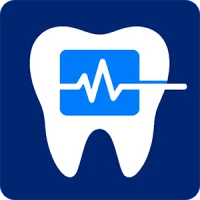
Dental Blog
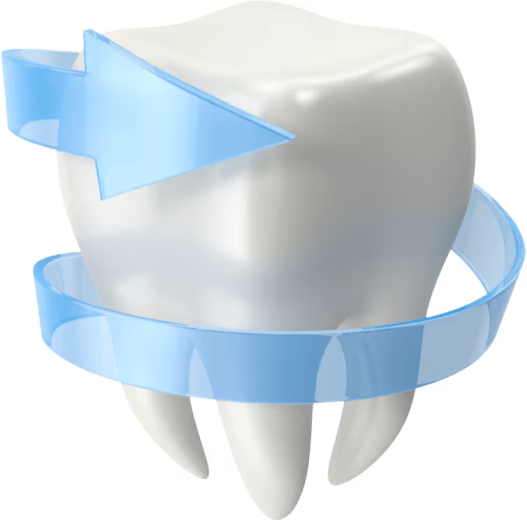

Resources for Dentists
Dive deep into helpful guides and in-depth information about:

Your Resource for Dentistry Insights
Sedation dentistry is evolving. Regulations change, compliance requirements grow, and practices need tools to stay ahead. The Sedate Dentistry Blog is here to help you learn, adapt, and succeed with resources built for dentists, oral surgeons, and office managers.

Explore Topics That Matter

Sedation Dentistry
Learn about sedation dentistry's best practices, compliance tips, and case studies.

Patient Vitals Monitoring
Device integrations, patient monitoring, and technology insights.

Patient Forms & Experience
Intake forms, digital consent, and patient-focused workflows and user experience.

Dental Practice Growth
Grow your dental practice with in depth guides, tutorials, and software reviews.
Recent Guides for Dentists

Why Sedate Dentistry Became the Standard for One Large DSO
A 40-location dental support organization (DSO) adopted a single sedation documentation standard across every office. In 90 days they moved from inconsistent, paper-heavy records to a live, prompt-driven workflow with device integrations, objective discharge, and audit-ready timelines. This case study shows the exact playbook that made Sedate Dentistry the DSO’s standard.
Table of Contents
Why Sedate Dentistry Became the Standard for One Large DSO
The DSO’s starting point was variation, not a lack of effort
The selection criteria focused on behavior change inside the chart
The platform decision came down to one screen that tells one story
The enterprise template made ambiguity impossible to save
The rollout plan used waves, not a “big bang”
The behavior changes that showed up on day one
The eight-field dose script unified how teams speak and type
The governance cadence kept standards from drifting
The DSO’s KPI roll-up showed improvement in weeks
The cost conversation shifted from licenses to rework avoided
The narrative clarity improved payer and regulator responses
The oral surgery and pediatric lines benefitted from small, high-impact fields
A representative IV case shows how the flow note writes itself
Objections surfaced and were answered with day-one realities
Standardizing sedation documentation across dozens of sites is a software and habit problem, not a memo problem. This article explains why one DSO selected Sedate Dentistry as its organization-wide platform, how they rolled it out in phased waves, what changed in the operatory on day one, and the metrics that proved the decision was right. Where relevant, you’ll find unlinked anchors with URLs next to them so you can replicate the same setup in your environment.
The DSO’s starting point was variation, not a lack of effort
Consistency failed because each clinic evolved its own sedation habits. Some offices captured concentration (mg/mL) and route on every dose; others didn’t. Nitrous was a checkbox at one site and a paragraph at another. Interval vitals slipped during stimulation, and discharge notes varied by provider. Audit packets took hours to assemble, and payer clarifications dragged on.
The selection criteria focused on behavior change inside the chart
The DSO defined success as standards that live where people click during care. They required timer-driven interval prompts, device streaming for vitals, required dose fields, a compact nitrous block, objective discharge criteria with hard stops, and an audit-ready timeline that writes the end-of-case note. Those capabilities centered on Sedation visit record software with support from IV sedation charting software and Dental sedation compliance.
The platform decision came down to one screen that tells one story
One screen reduced clicks and context switching. Intake, vitals, medications, nitrous, events, and discharge lived in the same record, aided by Patient Vitals Monitor Integrations so SpO₂, HR, NIBP, and ETCO₂ landed in the chart without transcription. The minute-by-minute timeline let reviewers see cause and effect around injections, stimulation spikes, airway maneuvers, and reversals in seconds.
The enterprise template made ambiguity impossible to save
Templates mirrored the spoken routine so entries were faster and consistent.
● Dose entries required medication name, concentration (mg/mL), route, exact dose, time, indication, immediate response, and running totals in digital sedation visit records.
● The nitrous block captured start time, titration range, peak percentage with duration at peak, and O₂ flush as one compact entry.
● Discharge used objective criteria enforced by compliance checklists for sedation so charts couldn’t close incomplete.
● Pediatric visits displayed weight-based mg/kg ceilings next to running totals, reducing math errors and avoiding late edits.
The rollout plan used waves, not a “big bang”
Phased deployment preserved production and built momentum. Each wave covered 8–10 clinics, followed a clear weekly cadence, and repeated the same behaviors.
The behavior changes that showed up on day one
Rooms felt calmer because single-screen charting and roles removed the scramble.
● The Monitor Tech owned timer cadence and called out vitals; device streaming kept entries on time.
● The Recorder typed live and used the eight-field dose script that matched on-screen fields.
● The Sedation Lead saw running totals and stopped asking mid-case, reducing interruptions.
● The nitrous block replaced scattered notes with one line that auditors could verify in seconds.
The eight-field dose script unified how teams speak and type
Consistency came from a single sentence repeated for every med entry. “Medication name and concentration (mg/mL), route, exact dose, time, indication, response, running total.” Because the fields matched the sentence in minute‑by‑minute IV charting, entries took seconds and no one backfilled later.
The governance cadence kept standards from drifting
Templates and consent language lived in sedation compliance software with version control and read receipts. A monthly “policy pulse” updated wording across the DSO. Site leads ran 10-minute audits weekly—three random charts scored on the same five metrics—then assigned two-minute micro-drills at huddle when a KPI dipped.
The DSO’s KPI roll-up showed improvement in weeks
Leaders needed proof that behavior changed everywhere, not just at pilot sites. The first month made the case clear.
The cost conversation shifted from licenses to rework avoided
Finance compared subscription costs with minutes saved per visit, fewer late edits, and faster audit packets. The modeling used Sedate Dentistry vs. paper records for assumptions and Plans & Pricing for scale discounts. The “software cost” line shrank against the labor saved by standards that enforce themselves.
The narrative clarity improved payer and regulator responses
Auditors and payers stopped requesting clarifications because charts carried concentration, route, indication, immediate response, and running totals for every dose, plus a nitrous one-liner and objective discharge. For clinics that needed an adoption story to share with staff, leaders circulated Case Study: Transitioning a Mid-Sized Practice From Xchart to Sedate Dentistry and Audit-Ready in Seconds: A Compliance Success Story.
The oral surgery and pediatric lines benefitted from small, high-impact fields
Oral surgery suites logged airway maneuvers as Observation → Action → Dose → Response with pre/post ETCO₂ and SpO₂; pediatric rooms displayed mg/kg ceilings next to running totals to prevent over-titration. These details lived in the same timeline view so reviewers could see cause and effect without scrolling.
A representative IV case shows how the flow note writes itself
This is the two-minute end-of-case summary pulled straight from the live timeline.
● 08:31 Baseline vitals ×2 recorded.
● 08:37 Midazolam 1 mg IV for anxiolysis; calmer; RR 14; SpO₂ 98%. Running total 1 mg.
● 08:44 Local infiltration; “extra entry” logged for stimulation; vitals stable.
● 08:46 Jaw thrust; O₂ 10 L/min; ETCO₂ 52→40; SpO₂ 94→99% by 08:48.
● 09:12 N₂O 20–35%; peak 35% 09:17–09:33; O₂ 100% ×5 min at end.
● 09:36 Recovery vitals stable; oriented ×3; ambulates with minimal assistance; discharge per clinician.
Objections surfaced and were answered with day-one realities
“Digital will slow down the room” shifted to “No rework after the patient leaves.” “Our sites are different” turned into “The same eight-field sentence works everywhere.” “We can’t afford it” became “Rework avoided covers the subscription.”
How the DSO kept momentum after go-live
Leaders locked in habits with a simple playbook: keep the KPI wall chart visible, run short micro-drills at huddle for the one metric that dipped, rotate chart reviews among sites monthly, and refresh device integration checks quarterly. For a monitoring-first lens, site leads shared Case Study: Improving Sedation Patient Safety With Automated Monitoring; for speed outcomes, they shared How One Dental Practice Cut Sedation Documentation Time in Half.
Bottom line
Sedate Dentistry became the DSO standard because it made the right behavior the easiest behavior. Required fields captured complete doses, timers turned policy into on-time vitals, a compact nitrous block ended a chronic audit ding, and objective discharge enforced itself. With device feeds and a single timeline, every clinic produced the same defensible chart—and reviewers could confirm safety in minutes.
Next Steps
Book a Free Demo to see how Sedate Dentistry’s Digital Sedation Visit Records Software can streamline and replace paper sedation visit records—saving time, money, and increasing compliance while reducing liability and improving the quality of patient records.
Ready to modernize your sedation documentation? Book a Free Demo.

Stay Ahead of the Curve
Benefits of Following Our Blog
Learn compliance best practices.
Discover new sedation software features.
Get expert tips for improving patient care.
See how practices are switching from paper or competitors like Xchart.

Learn More About Sedate Dentistry?
Request a software demo today. See how we can digitalize your sedation visit records.
Simple Pricing, No Hidden Fees
No limits on Procedures or Patients (additional fees for additional offices and dentists)
Testimonials
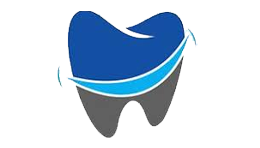
SmileRight Dentistry
Here's Sedate Dentistry Software in a nutshell. Time Saver. Money Saver. Easy to use. Amazing support. End of story.
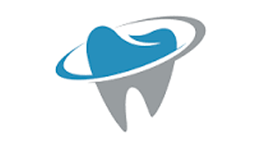
DentalClean
We learned about Sedate Dentistry from one of their other sister companies Edental. We switched from Xchart and this app works great.
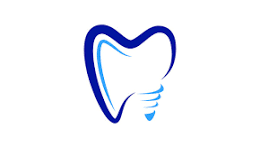
Metro Dentistry
The team at Sedate Dentistry has been amazing, especially Josh who helped integrate into our Edan X10. Much better than Xchart and a fraction of the price.
Contact Us
Contact Us
3165 West 4700 South, Suite A, Taylorsville Utah 84129



















